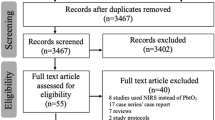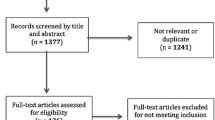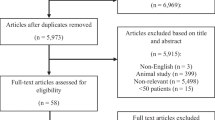Abstract
Monitoring intracranial pressure (ICP) is pivotal in the management of severe traumatic brain injury (TBI), but secondary brain injuries can arise despite normal ICP levels. Cerebral tissue oxygenation monitoring (PbtO2) may detect neuronal tissue infarction thresholds, enhancing neuroprotection. We performed a systematic review and meta-analysis to evaluate the effects of combined cerebral tissue oxygenation (PbtO2) and ICP compared to isolated ICP monitoring in patients with TBI. PubMed, Embase, Cochrane, and Web of Sciences databases were searched for trials published up to June 2023. A total of 16 studies comprising 37,820 patients were included. ICP monitoring was universal, with additional placement of PbtO2 in 2222 individuals (5.8%). The meta-analysis revealed a reduction in mortality (OR 0.57, 95% CI 0.37–0.89, p = 0.01), a greater likelihood of favorable outcomes (OR 2.28, 95% CI 1.66–3.14, p < 0.01), and a lower chance of poor outcomes (OR 0.51, 95% CI 0.34–0.79, p < 0.01) at 6 months for the PbtO2 plus ICP group. However, these patients experienced a longer length of hospital stay (MD 2.35, 95% CI 0.50–4.20, p = 0.01). No significant difference was found in hospital mortality rates (OR 0.81, 95% CI 0.61–1.08, p = 0.16) or intensive care unit length of stay (MD 2.46, 95% CI − 0.11–5.04, p = 0.06). The integration of PbtO2 to ICP monitoring improved mortality outcomes and functional recovery at 6 months in patients with TBI. PROSPERO (International Prospective Register of Systematic Reviews) CRD42022383937; https://www.crd.york.ac.uk/prospero/display_record.php?RecordID=383937










Similar content being viewed by others
Data Availability
Data for this study is available within the original articles.
References
Capizzi A, Woo J, Verduzco-Gutierrez M (2020) Traumatic brain injury: an overview of epidemiology, pathophysiology, and medical management. Med Clin North Am 104(2):213–238. https://doi.org/10.1016/j.mcna.2019.11.001
Langlois JA, Rutland-Brown W, Wald MM (2006) The epidemiology and impact of traumatic brain injury: a brief overview. J Head Trauma Rehabil 21(5):375–378. https://doi.org/10.1097/00001199-200609000-00001
Carney N, Totten AM, O’Reilly C, Ullman JS, Hawryluk GW, Bell MJ, Bratton SL, Chesnut R, Harris OA, Kissoon N, Rubiano AM, Shutter L, Tasker RC, Vavilala MS, Wilberger J, Wright DW, Ghajar J (2017) Guidelines for the management of severe traumatic brain injury, Fourth Edition. Neurosurgery 80(1):6–15. https://doi.org/10.1227/NEU.0000000000001432
Stiefel MF, Udoetuk JD, Spiotta AM, Gracias VH, Goldberg A, Maloney-Wilensky E, Bloom S, Le Roux PD (2006) Conventional neurocritical care and cerebral oxygenation after traumatic brain injury. J Neurosurg 105(4):568–575. https://doi.org/10.3171/jns.2006.105.4.568
Dobrzeniecki M, Trofimov A, Martynov D, Agarkova D, Trofimova K, Semenova ZB, Bragin DE (2021) Secondary cerebral ischemia at traumatic brain injury is more closely related to cerebrovascular reactivity impairment than to intracranial hypertension. Acta Neurochir Suppl 131:159–162. https://doi.org/10.1007/978-3-030-59436-7_32 PMID: 33839838; PMCID: PMC8109249
Kaur P, Sharma S (2018) Recent advances in pathophysiology of traumatic brain injury. Curr Neuropharmacol 16(8):1224–1238. https://doi.org/10.2174/1570159X15666170613083606 PMID: 28606040; PMCID: PMC6142406
Xie Q, Wu HB, Yan YF, Liu M, Wang ES (2017) Mortality and outcome comparison between brain tissue oxygen combined with intracranial pressure/cerebral perfusion pressure-guided therapy and intracranial pressure/cerebral perfusion pressure-guided therapy in traumatic brain injury: a meta-analysis. World Neurosurg 100:118–127. https://doi.org/10.1016/j.wneu.2016.12.097 Epub 2017 Jan 3
Nangunoori R, Maloney-Wilensky E, Stiefel M, Park S, Andrew Kofke W, Levine JM, Yang W, Le Roux PD (2012) Brain tissue oxygen-based therapy and outcome after severe traumatic brain injury: a systematic literature review. Neurocrit Care 17(1):131–138. https://doi.org/10.1007/s12028-011-9621-9
Gouvêa Bogossian E, Diosdado A, Barrit S, Al Barajraji M, Annoni F, Schuind S, Taccone FS (2022) The impact of invasive brain oxygen pressure guided therapy on the outcome of patients with traumatic brain injury: a systematic review and meta-analysis. Neurocrit Care 37(3):779–789. https://doi.org/10.1007/s12028-022-01613-0 Epub 2022 Sep 30
Hoffman H, Abi-Aad K, Bunch KM, Beutler T, Otite FO, Chin LS (2021) Outcomes associated with brain tissue oxygen monitoring in patients with severe traumatic brain injury undergoing intracranial pressure monitoring. J Neurosurg 135(6):1799–1806. https://doi.org/10.3171/2020.11.JNS203739
Roman G, Hrdy O, Vrbica K, Hudec J, Mrlian A, Smrcka M (2023) Brain tissue oxygen levels as a perspective therapeutic target in traumatic brain injury. Retrospective cohort study. J Crit Care Med (Targu Mures) 9(1):12–19. https://doi.org/10.2478/jccm-2023-0001 PMID: 36890978; PMCID: PMC9987269
Okonkwo DO, Shutter LA, Moore C, Temkin NR, Puccio AM, Madden CJ, Andaluz N, Chesnut RM, Bullock MR, Grant GA, McGregor J, Weaver M, Jallo J, LeRoux PD, Moberg D, Barber J, Lazaridis C, Diaz-Arrastia RR (2017) Brain oxygen optimization in severe traumatic brain injury phase-II: a phase II randomized trial. Crit Care Med 45(11):1907–1914. https://doi.org/10.1097/CCM.0000000000002619 PMID: 29028696; PMCID: PMC5679063
Komisarow JM, Toro C, Curley J, Mills B, Cho C, Simo GM, Vavilala MS, Laskowitz DT, James ML, Mathew JP, Hernandez A, Sampson J, Ohnuma T, Krishnamoorthy V (2022) Utilization of brain tissue oxygenation monitoring and association with mortality following severe traumatic brain injury. Neurocrit Care 36(2):350–356. https://doi.org/10.1007/s12028-021-01394-y Epub 2021 Nov 29. PMID: 34845596; PMCID: PMC9941980
Moher D, Liberati A, Tetzlaff J, Altman DG, PRISMA Group (2009) Preferred reporting items for systematic reviews and meta-analyses: the PRISMA statement. BMJ. 339:b2535. https://doi.org/10.1136/bmj.b2535 PMID: 19622551; PMCID: PMC2714657
Sterne JAC, Savović J, Page MJ, Elbers RG, Blencowe NS, Boutron I, Cates CJ, Cheng H-Y, Corbett MS, Eldridge SM, Hernán MA, Hopewell S, Hróbjartsson A, Junqueira DR, Jüni P, Kirkham JJ, Lasserson T, Li T, McAleenan A et al (2019) RoB 2: a revised tool for assessing risk of bias in randomised trials. BMJ 366:l4898
Sterne JAC, Hernán MA, Reeves BC, Savović J, Berkman ND, Viswanathan M, Henry D, Altman DG, Ansari MT, Boutron I, Carpenter JR, Chan AW, Churchill R, Deeks JJ, Hróbjartsson A, Kirkham J, Jüni P, Loke YK, Pigott TD et al (2016) ROBINS-I: a tool for assessing risk of bias in non-randomized studies of interventions. BMJ 355:i4919. https://doi.org/10.1136/bmj.i4919
Adamides AA, Cooper DJ, Rosenfeldt FL, Bailey MJ, Pratt N, Tippett N, Vallance S, Rosenfeld JV (2009) Focal cerebral oxygenation and neurological outcome with or without brain tissue oxygen-guided therapy in patients with traumatic brain injury. Acta Neurochir 151(11):1399–1409. https://doi.org/10.1007/s00701-009-0398-y
Barrit S, Al Barajraji M, El Hadweh S, Dewitte O, Torcida N, Andre J, Taccone FS, Schuind S, Gouvêa BE (2022) Brain tissue oxygenation-guided therapy and outcome in traumatic brain injury: a single-center matched cohort study. Brain Sci 12(7):887. https://doi.org/10.3390/brainsci12070887 PMID: 35884694; PMCID: PMC9315682
Green JA, Pellegrini DC, Vanderkolk WE, Figueroa BE, Eriksson EA (2013) Goal directed brain tissue oxygen monitoring versus conventional management in traumatic brain injury: an analysis of in hospital recovery. Neurocrit Care 18(1):20–25. https://doi.org/10.1007/s12028-012-9797-7
Lee HC, Chuang HC, Cho DY, Cheng KF, Lin PH, Chen CC (2010) Applying cerebral hypothermia and brain oxygen monitoring in treating severe traumatic brain injury. World Neurosurg 74(6):654–660. https://doi.org/10.1016/j.wneu.2010.06.019
Lin CM, Lin MC, Huang SJ, Chang CK, Chao DP, Lui TN, Ma HI, Liu MY, Chung WY, Shih YH, Tsai SH, Chiou HY, Lin MR, Jen SL, Wei L, Wu CC, Lin EY, Liao KH, Chiang YH et al (2015) A prospective randomized study of brain tissue oxygen pressure-guided management in moderate and severe traumatic brain injury patients. Biomed Res Int 2015:529580. https://doi.org/10.1155/2015/529580 Epub 2015 Aug 27. PMID: 26413530; PMCID: PMC4564619
Martini RP, Deem S, Yanez ND, Chesnut RM, Weiss NS, Daniel S, Souter M, Treggiari MM (2009) Management guided by brain tissue oxygen monitoring and outcome following severe traumatic brain injury. J Neurosurg 111(4):644–649. https://doi.org/10.3171/2009.2.JNS08998
McCarthy MC, Moncrief H, Sands JM, Markert RJ, Hall LC, Wenker IC, Anderson HL 3rd, Ekeh AP, Walusimbi MS, Woods RJ, Saxe JM, Tchorz KM (2009) Neurologic outcomes with cerebral oxygen monitoring in traumatic brain injury. Surgery. 146(4):585–590; discussion 590-1. https://doi.org/10.1016/j.surg.2009.06.059
Meixensberger J, Jaeger M, Väth A, Dings J, Kunze E, Roosen K (2003) Brain tissue oxygen guided treatment supplementing ICP/CPP therapy after traumatic brain injury. J Neurol Neurosurg Psychiatry 74(6):760–764. https://doi.org/10.1136/jnnp.74.6.760 PMID: 12754347; PMCID: PMC1738513
Narotam PK, Morrison JF, Nathoo N (2009) Brain tissue oxygen monitoring in traumatic brain injury and major trauma: outcome analysis of a brain tissue oxygen-directed therapy. J Neurosurg 111(4):672–682. https://doi.org/10.3171/2009.4.JNS081150
Sekhon MS, Gooderham P, Toyota B, Kherzi N, Hu V, Dhingra VK, Hameed MS, Chittock DR, Griesdale DE (2017) Implementation of neurocritical care is associated with improved outcomes in traumatic brain injury. Can J Neurol Sci 44(4):350–357. https://doi.org/10.1017/cjn.2017.25 Epub 2017 Mar 27
Spiotta AM, Stiefel MF, Gracias VH, Garuffe AM, Kofke WA, Maloney-Wilensky E, Troxel AB, Levine JM, Le Roux PD (2010) Brain tissue oxygen-directed management and outcome in patients with severe traumatic brain injury. J Neurosurg 113(3):571–580. https://doi.org/10.3171/2010.1.JNS09506
Wang Z, Zhang R, Han Z, Wang J, Wu R, Zhao W, Zhang X, Bao J, Yang W, Zhang Z (2021) Application of continuous monitoring of intracranial pressure and brain oxygen partial pressure in the treatment of patients with severe craniocerebral injury. Zhonghua Wei Zhong Bing Ji Jiu Yi Xue 33(4):449–454. Chinese. https://doi.org/10.3760/cma.j.cn121430-20201106-00700
Zaloshnja E, Miller T, Langlois JA, Selassie AW (2008) Prevalence of long-term disability from traumatic brain injury in the civilian population of the United States, 2005. J Head Trauma Rehabil 23(6):394–400. https://doi.org/10.1097/01.HTR.0000341435.52004.ac
Bazarian JJ, Cernak I, Noble-Haeusslein L, Potolicchio S, Temkin N (2009) Long-term neurologic outcomes after traumatic brain injury. J Head Trauma Rehabil 24(6):439–451. https://doi.org/10.1097/HTR.0b013e3181c15600
Oddo M, Levine JM, Mackenzie L, Frangos S, Feihl F, Kasner SE, Katsnelson M, Pukenas B, Macmurtrie E, Maloney-Wilensky E, Kofke WA, LeRoux PD (2011) Brain hypoxia is associated with short-term outcome after severe traumatic brain injury independently of intracranial hypertension and low cerebral perfusion pressure. Neurosurgery. 69(5):1037–1045; discussion 1045. https://doi.org/10.1227/NEU.0b013e3182287ca7
Bardt TF, Unterberg AW, Härtl R, Kiening KL, Schneider GH, Lanksch WR (1998) Monitoring of brain tissue PO2 in traumatic brain injury: effect of cerebral hypoxia on outcome. Acta Neurochir Suppl 71:153–156. https://doi.org/10.1007/978-3-7091-6475-4_45
Chang JJ, Youn TS, Benson D, Mattick H, Andrade N, Harper CR, Moore CB, Madden CJ, Diaz-Arrastia RR (2009) Physiologic and functional outcome correlates of brain tissue hypoxia in traumatic brain injury. Crit Care Med 37(1):283–290. https://doi.org/10.1097/CCM.0b013e318192fbd7
Valadka AB, Gopinath SP, Contant CF, Uzura M, Robertson CS (1998) Relationship of brain tissue PO2 to outcome after severe head injury. Crit Care Med 26(9):1576–1581. https://doi.org/10.1097/00003246-199809000-00029
Maloney-Wilensky E, Gracias V, Itkin A, Hoffman K, Bloom S, Yang W, Christian S, LeRoux PD (2009) Brain tissue oxygen and outcome after severe traumatic brain injury: a systematic review. Crit Care Med 37(6):2057–2063. https://doi.org/10.1097/CCM.0b013e3181a009f8
Martini RP, Deem S, Treggiari MM (2013) Targeting brain tissue oxygenation in traumatic brain injury. Respir Care 58(1):162–172. https://doi.org/10.4187/respcare.01942
Andrews PJ, Citerio G, Longhi L, Polderman K, Sahuquillo J, Vajkoczy P (2008) Neuro-intensive care and emergency medicine (NICEM) section of the European Society of Intensive Care Medicine. NICEM consensus on neurological monitoring in acute neurological disease. Intensive Care Med 34(8):1362–1370. https://doi.org/10.1007/s00134-008-1103-y Epub 2008 Apr 9
Vajkoczy P, Horn P, Thome C, Munch E, Schmiedek P (2003) Regional cerebral blood flow monitoring in the diagnosis of delayed ischemia following aneurysmal subarachnoid hemorrhage. J Neurosurg 98(6):1227–1234. https://doi.org/10.3171/jns.2003.98.6.1227
Soehle M, Jaeger M, Meixensberger J (2003) Online assessment of brain tissue oxygen autoregulation in traumatic brain injury and subarachnoid hemorrhage. Neurol Res 25(4):411–417. https://doi.org/10.1179/016164103101201580
Van den Brink WA, van Santbrink H, Steyerberg EW, Avezaat CJ, Suazo JA, Hogesteeger C, Jansen WJ, Kloos LM, Vermeulen J, Maas AI (2000) Brain oxygen tension in severe head injury. Neurosurgery. 46(4):868–876; discussion 876-8. https://doi.org/10.1097/00006123-200004000-00018
Van Santbrink H, Maas AI, Avezaat CJ (1996) Continuous monitoring of partial pressure of brain tissue oxygen in patients with severe head injury. Neurosurgery. 38(1):21–31. https://doi.org/10.1097/00006123-199601000-00007
Tolias CM, Reinert M, Seiler R, Gilman C, Scharf A, Bullock MR (2004) Normobaric hyperoxia--induced improvement in cerebral metabolism and reduction in intracranial pressure in patients with severe head injury: a prospective historical cohort-matched study. J Neurosurg 101(3):435–444. https://doi.org/10.3171/jns.2004.101.3.0435
Schneider GH, Sarrafzadeh AS, Kiening KL, Bardt TF, Unterberg AW, Lanksch WR (1998) Influence of hyperventilation on brain tissue-PO2, PCO2, and pH in patients with intracranial hypertension. Acta Neurochir Suppl 71:62–65. https://doi.org/10.1007/978-3-7091-6475-4_20
Reinprecht A, Greher M, Wolfsberger S, Dietrich W, Illievich UM, Gruber A (2003) Prone position in subarachnoid hemorrhage patients with acute respiratory distress syndrome: effects on cerebral tissue oxygenation and intracranial pressure. Crit Care Med 31(6):1831–1838. https://doi.org/10.1097/01.CCM.0000063453.93855.0A
McGarry LJ, Thompson D, Millham FH, Cowell L, Snyder PJ, Lenderking WR, Weinstein MC (2002) Outcomes and costs of acute treatment of traumatic brain injury. J Trauma 53(6):1152–1159. https://doi.org/10.1097/00005373-200212000-00020
Andriessen TM, Horn J, Franschman G, van der Naalt J, Haitsma I, Jacobs B, Steyerberg EW, Vos PE (2011) Epidemiology, severity classification, and outcome of moderate and severe traumatic brain injury: a prospective multicenter study. J Neurotrauma 28(10):2019–2031. https://doi.org/10.1089/neu.2011.2034 Epub 2011 Sep 27
McCrea MA, Giacino JT, Barber J, Temkin NR, Nelson LD, Levin HS, Dikmen S, Stein M, Bodien YG, Boase K, Taylor SR, Vassar M, Mukherjee P, Robertson C, Diaz-Arrastia R, Okonkwo DO, Markowitz AJ, Manley GT, Investigators TRACK-TBI et al (2021) Functional Outcomes over the first year after moderate to severe traumatic brain injury in the prospective, longitudinal TRACK-TBI Study. JAMA Neurol 78(8):982–992. https://doi.org/10.1001/jamaneurol.2021.2043 PMID: 34228047; PMCID: PMC8261688
Prins M, Greco T, Alexander D, Giza CC (2013) The pathophysiology of traumatic brain injury at a glance. Dis Model Mech 6(6):1307–1315. https://doi.org/10.1242/dmm.011585 Epub 2013 Sep 12. PMID: 24046353; PMCID: PMC3820255
Author information
Authors and Affiliations
Contributions
All authors participated in the interpretation of data, review of the manuscript, and approved its submission. All authorship requirements have been met and the final manuscript was approved by all authors.
Corresponding author
Ethics declarations
The present manuscript complies with all instructions to authors. All authors confirm adherence to ethical guidelines—no data, including images, have been falsified or manipulated to support our conclusions—and the use of a reporting checklist for systematic reviews and meta-analysis, included in the end of the manuscript.
Ethical approval
None.
Conflict of interest
The authors declare no competing interests.
Ethical approval and Informed consent
was waived due to the nature of this article.
Additional information
Publisher’s note
Springer Nature remains neutral with regard to jurisdictional claims in published maps and institutional affiliations.
This is an original article, not published elsewhere and not under consideration by another journal.
Supplementary information
Supplementary file 1
(DOCX 146 kb)
Rights and permissions
Springer Nature or its licensor (e.g. a society or other partner) holds exclusive rights to this article under a publishing agreement with the author(s) or other rightsholder(s); author self-archiving of the accepted manuscript version of this article is solely governed by the terms of such publishing agreement and applicable law.
About this article
Cite this article
Santana, L.S., Diniz, J.B.C., Solla, D.J.F. et al. Brain tissue oxygen combined with intracranial pressure monitoring versus isolated intracranial pressure monitoring in patients with traumatic brain injury: an updated systematic review and meta-analysis. Neurol Sci (2024). https://doi.org/10.1007/s10072-024-07392-0
Received:
Accepted:
Published:
DOI: https://doi.org/10.1007/s10072-024-07392-0




